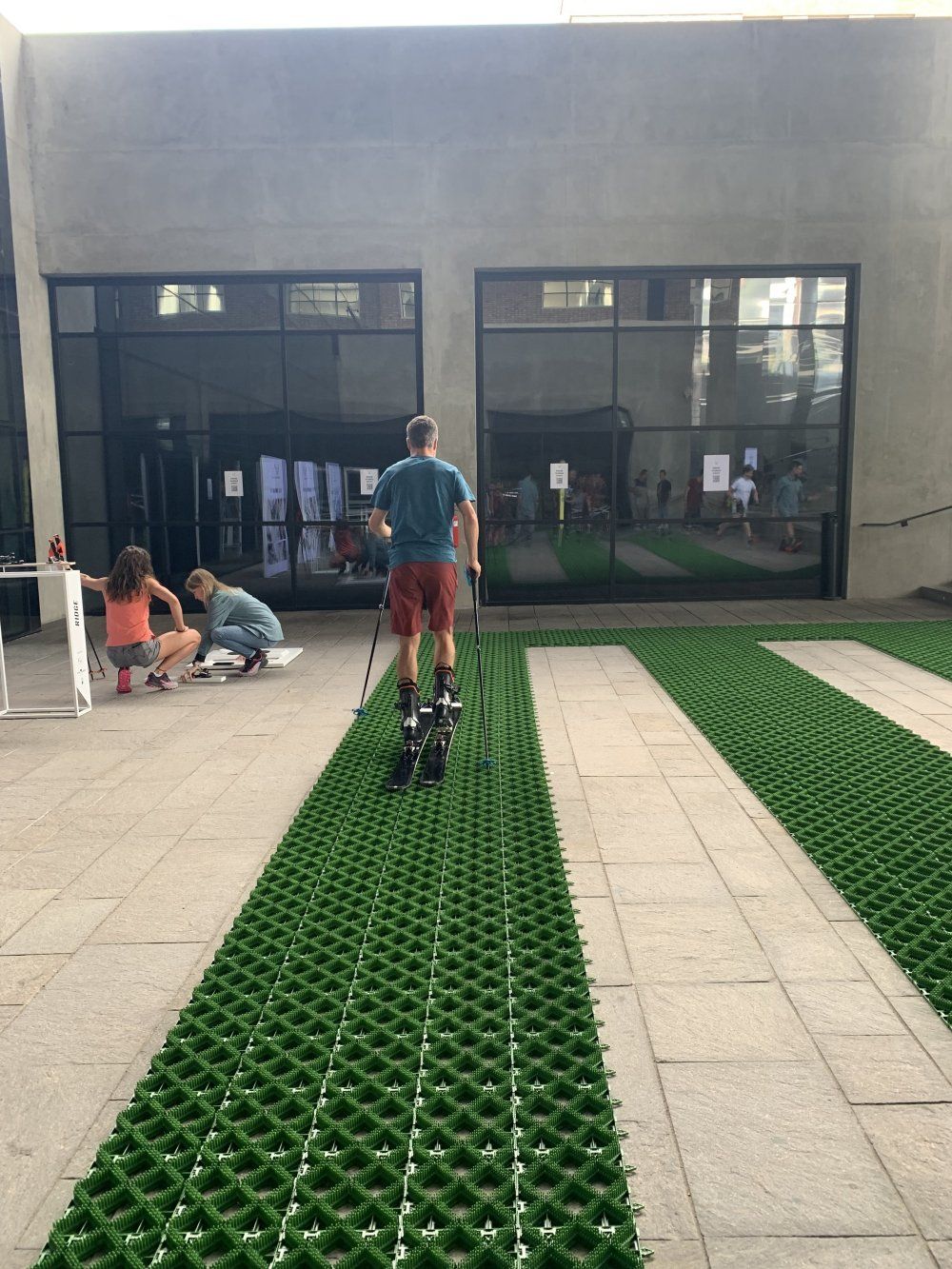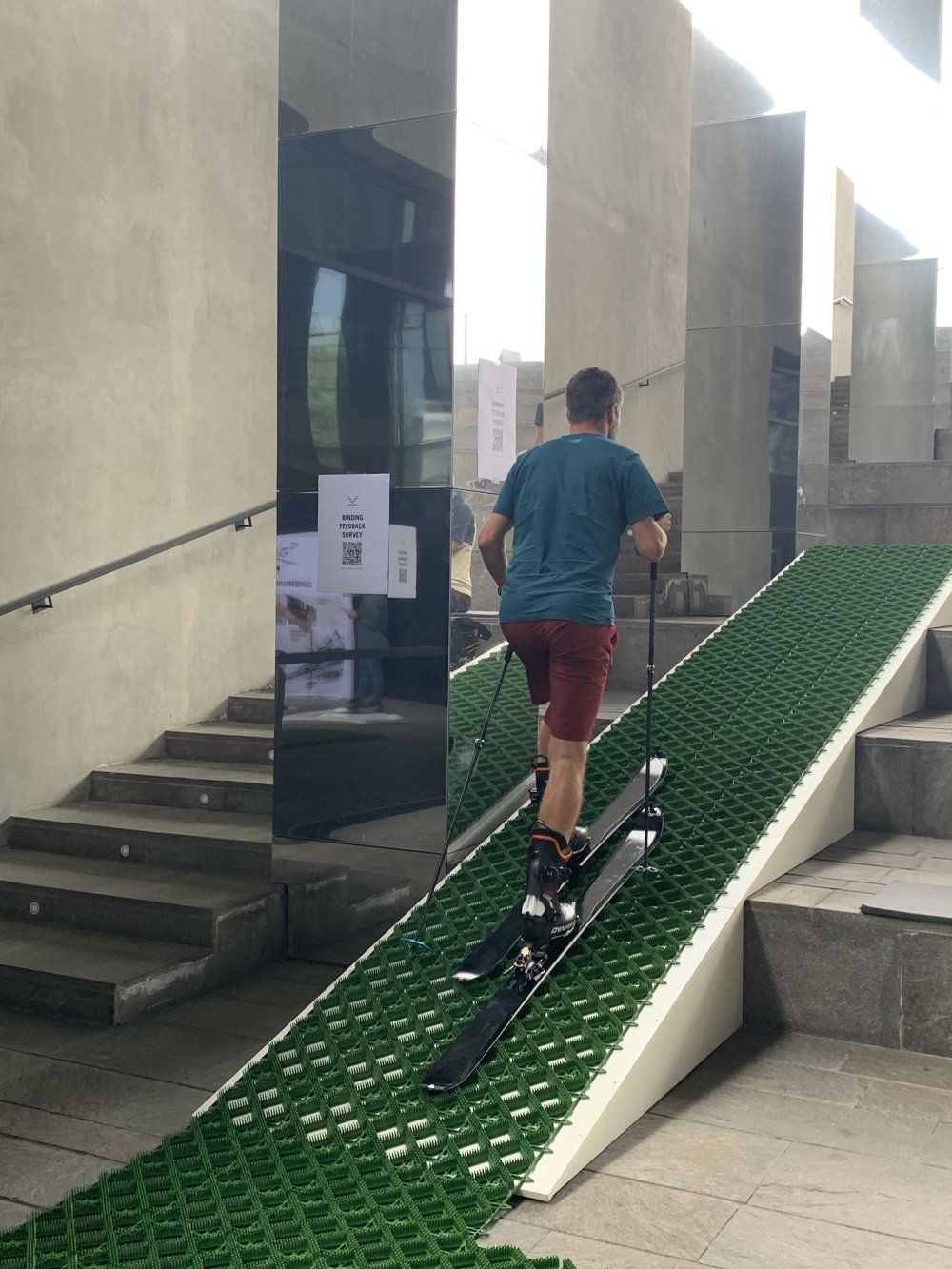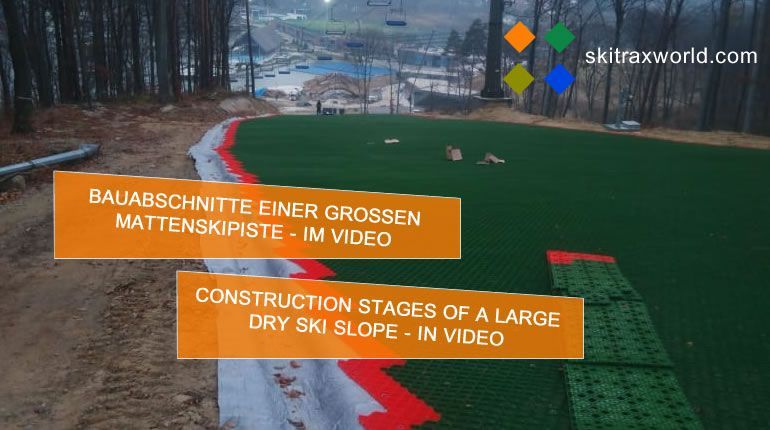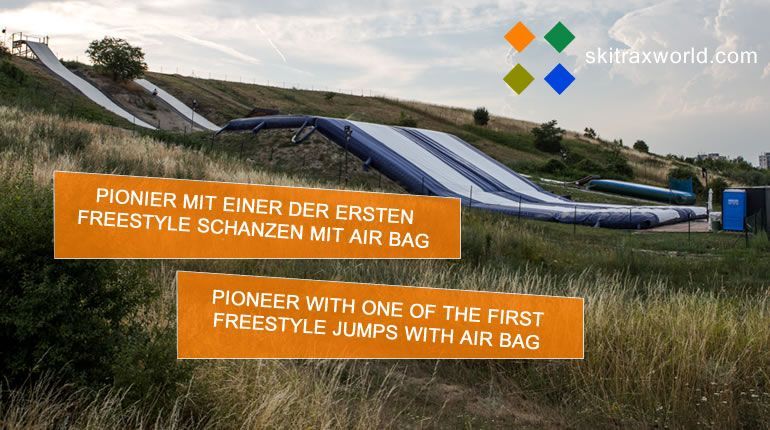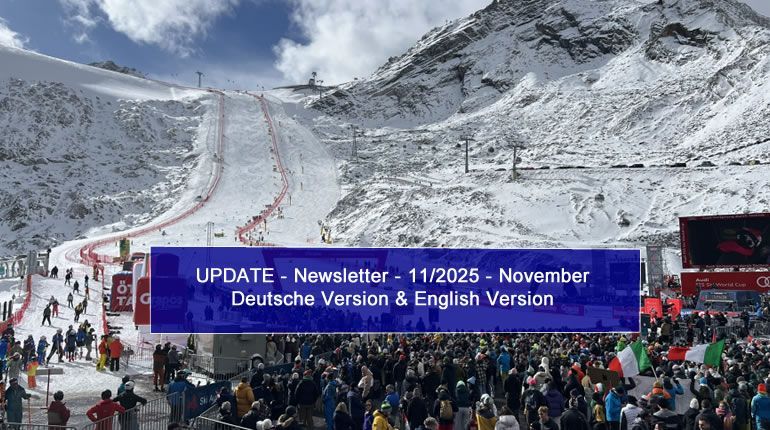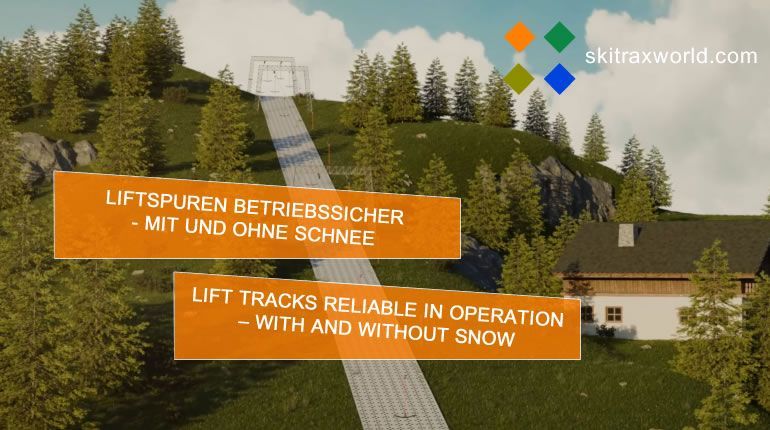Ski mountaineering without snow
It would be so easy with the Slopetrax sliding mats.
Ski mountaineering will be included in the Olympic programme for the first time at the 2026 Winter Olympics. Reason enough to take a closer look at this increasingly popular sport. More and more people are going ski touring in winter and enjoying the combination of challenging ascents and descents in unprepared terrain.
In ski mountaineering, the focus is less on speed and more on the ascent and mastering the terrain. In contrast to alpine skiing, which is all about fast descents, ski mountaineering is a discipline that emphasises the ascent in untouched terrain.
During the ascent, you move at a moderate pace in order to conserve your strength and maintain your stamina. The speed depends on various factors, such as the steepness of the terrain, snow conditions and individual fitness. As a rule, speeds of around 2 to 4 kilometres per hour are achieved on the ascent.
The descent in ski mountaineering is also done carefully, as the terrain is often challenging and you have to watch out for avalanches. Depending on your ability and the terrain, you can reach speeds of 10 to 30 kilometres per hour. However, it is important to emphasise that the main goal of ski mountaineering is not speed, but the experience of nature and the sporting challenge.
But competitive sport requires year-round training. With the
Slopetrax mats, there is now a way to practise this sport in summer too, usually even on the mountain on your doorstep. Ideally, there should be a ski jump ramp with mats. The mountaineer can then use a serpentine track with his Touring skis with skins and on mats to get to the top, stow his skins in his rucksack and ski down the ski jump"piste" with his Touring skis. Once at the bottom, quickly put your skins back on your skis and head back up.
UPDATE - Berichte von anderen Installationen











